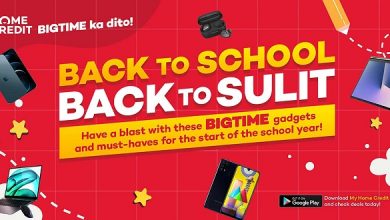Shopping around for a restaurant POS (point-of-sale) system is a little different than doing the same for retail or B2B businesses. Though some restaurants in the Philippines do quite well with manual systems or POSs designed for other businesses, using an outdated or unsuitable POS will always create a drag on operations. At worst, sticking with these systems can even negatively impact customer experiences, which can be fatal for service-based businesses like restaurants.
When choosing a POS Philippines restaurant owners might appreciate, you have to consider a range of factors that are relevant not just for the wider food and beverage industry but also for the service setup used by their business. A food kiosk, for example, would have different considerations from a dine-in restaurant. Likewise, a fine dining establishment may have slightly different requirements from a fast food joint.
Be sure to consider these features when shortlisting POS products for your food business:
1. A Simple User Interface
Restaurants are busy work environments, often leaving very little time for new system familiarization. Simpler interfaces that cover everything users need to do on a single screen tend to be less prone to user errors while also requiring less critical onboarding time to fully master. Be sure to try before you buy and prioritize the POS systems that offer an intuitive experience.
2. Offline Functionality
Despite improvements in the Philippines’ digital infrastructure, local restaurants still face frequent connectivity issues. Given this, your POS system needs to offer some kind of offline functionality so that you can still accommodate at least some customers during outages. If you operate a pop-up stand or have a location in a remote area, offline capabilities should be non-negotiable.
3. Real-Time Menu Changes
Your POS should be able to easily accommodate a full gamut of menu change scenarios. Importantly, it should be able to clearly mark items that are and aren’t available in real-time to prevent staff from making mistakes that could impact the customer experience.
4. Accepts a Range of Payment Methods
Both payment cards and digital wallets are now being widely used in daily transactions throughout the Philippines. At the very least, your POS should be able to accommodate payments through debit or credit cards and QR Ph-compliant QR codes in addition to cash payments.
5. Keeps Customer Data Secure
Whichever solution you choose should comply with the Data Privacy Act of 2012 and other regulations related to customers’ data. System protections should not only cover payment details but also other types of personal information such as what you might gather for a promo or loyalty program.
6. Integrates with Inventory and Shift Management Tools
It’s great if your system can integrate with everything else you have, but, at the minimum, it should also be able to link up and exchange data with your inventory and shift management systems. This integration can save several hours a week on manual data entry and help ensure immediate visibility of your supply chains as well as staff activities.
7. Comes with User Training and After-Sales Support
Even the most user-friendly POS will require some level of training to use effectively. Regardless of the POS you choose, the vendor should commit to providing a reasonable amount of user training and technical support. The latter is especially critical since POS outages can be very bad news for your operations.
8. Designed for Improving Customer Experiences
Because service is everything for restaurants, POS tools must offer features that help the customer experience. The ability to facilitate loyalty programs, track individual payer preferences, or integrate with customer relationship management (CRM) modules are just some of the nice-to-have POS features that could elevate customer experiences at your restaurant.
9. Analytics
Your POS will be a primary point of interaction between you and your diners, making the ability to pull analytics data out of it essential. The POS data should, at the very least, be exportable as a spreadsheet. Better POS options should also be able to generate easy-to-parse report summaries on demand.
10. Mobile Functionality
This feature is, of course, essential for pop-up stands and kiosks, but it can also be important for permanent brick-and-mortar locations. Being able to bring your POS device to a customer’s table avoids the need for customers to line up at a cashier and opens up new customer service possibilities. A mobile POS can even allow for cashless-on-demand food deliveries and other such options.
11. Licensing and Maintenance Fees
Be sure to inquire about the licensing structure and ongoing maintenance fees associated with your shortlisted POS systems. Look at the cost of updates, as well as any potential fees for technical support beyond a certain point.
12. Bundled Hardware
Any hardware included with your POS solution should be modern and, above everything else, be reliable. POS hardware doesn’t have to be cutting edge but it has to be able to provide high uptimes while also being reasonably simple to service.
Serve Success with Your Restaurant POS
Hopefully, this guide will make it simpler to find a restaurant-focused system that saves you thousands of hours of labor while also addressing your restaurant’s unique pain points. Regardless of whatever POS system you select, just make sure that it meaningfully simplifies work without compromising on the areas most important for food service.







